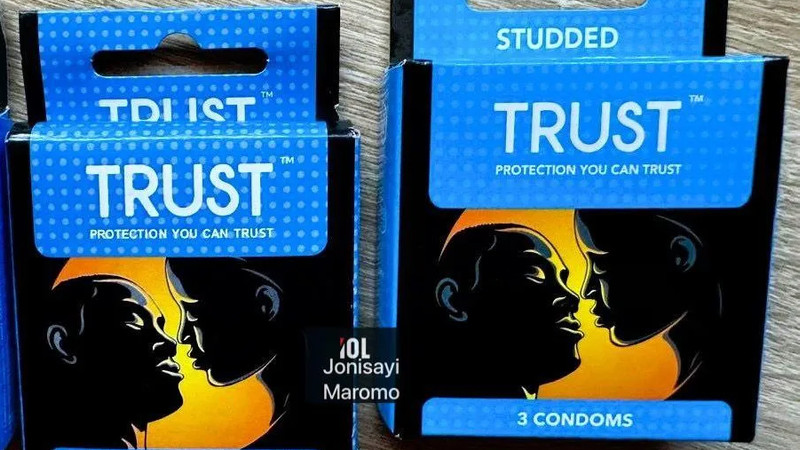Spokesperson for the national Department of Health, Foster Mohale said these counterfeit condoms do not have verified efficacy.
“As the department we are concerned about these reports of fake condoms because they not certified by the SA Bureau of Standards (SABS) through quality control tests to provide the required protection against sexually transmitted infections including the HIV and unplanned pregnancies,” Mohale said on Saturday.
Condoms are one of the most viable and safe methods of contraception, which carry the promise of safe sex.
“Counterfeit condoms pose severe public health risks, including the failure to prevent sexually transmitted infections (STIs), unwanted pregnancies, thus putting the lives of innocent consumers and users at risk,” said Mohale.
“As the department, we will work closely with the private sector that sells condoms to mitigate the current challenges of reported fake condoms with potential to contribute to rising numbers of HIV infections in the country, especially among young people.”
The Department of Health has urged community members to use condoms from public healthcare facilities, which are available free of charge and the condoms sold at reputable stores.
“We call upon anyone with information about the traders who sell fake condoms and other contraceptive methods to anonymously report to the Department of Health or nearest police station or the real manufacturer of such product,” said Mohale.
“It is our collective responsibility as the government, communities and private sector to put the interests and safety of our people before commercial gains.”
Mohale added that normally, each batch of condoms produced by suppliers has a lot number when there is also the name of the supplier.
“This assists with traceability if ever we receive complains about certain condoms,” said Mohale.

In an exclusive story, IOL reported on Friday that some Gauteng residents have been living in fear after using what they believe are counterfeit condoms sold at spaza shops dotted across the province.
IOL has been conducting an investigation into the authenticity of numerous packs of Trust condoms.
In Sunnyside, some residents noticed conspicuous discrepancies on the packaging of the Trust condoms and panicked after realising that the quality seemed to be compromised on the other packaging.
The IOL investigation also ventured into the heavily populated Hillbrow, where the seemingly fake condoms are on sale from spaza shops, for R20.
During the IOL investigation, the suspicious packs of condoms were also picked up in places including Atteridgeville, Tembisa, Mamelodi, Joburg CBD, Pretoria central, and Soweto.
The clearly visible difference between the two is on the packaging of the box with three sealed condoms.
The ones bought from spaza shops were in a closed box which is not sealed at all. The unsealed boxes can be reused. Condoms of the same Trust brand bought at well-established shops are in tightly sealed boxes which can only be used once.
The other glaring difference is that some packs of the sky-blue studded Trust condoms are written “Compliant with WHO specifications”, with a label stating “studded” or “smooth” while the suspicious packs bought in spaza shops are written “World Health Organization compliant” with no label of the variety.
Armed with this information, IOL approached statutory body, the South African Bureau of Standards (SABS) which is the authority responsible for the promotion and maintenance of standardisation and quality in connection with commodities in the country.
The SABS said it does not regulate the importing of condoms into South Africa and the function falls in the ambit of the national Department of Health.
“Producing condoms in South Africa involves detailed process to ensure they meet safety, quality, and regulatory standards. Requirements for packaging of condoms are stated in ISO 4074:2015/SANS 4074:2017,” the SABS said in its written response to IOL.
On the glaring differences on the packaging, SABS stated that SANS4074 approved condom boxes will be written Compliant with WHO specifications, and they will be labelled “studded” or “smooth”.
“The counterfeit condoms will have World Health Organization compliant and will be dull and very fragile. This means that there is a SABS mark scheme [being] abused by producers of fake condoms.”
Regarding the sealing of the individual boxes containing three condoms, SABS said ISO/SANS 4074 details sealing specifications for condom wraps but not for condom boxes.
“However, consumers must shy away from products that are defective or look like their quality has been compromised,” SABS responded.
Authentic condoms must comply with SANS 4074 and include specific labelling requirements, such as:
- Type or texture (studded or smooth)
- SABS certification mark (if certified)
- Expiry date and batch number
- Manufacturer’s details
SABS said lack of this information may indicate non-compliance.
Additionally, SABS has raised red flags on the boxes of condoms written “World Health Organization compliant”.
“This phrasing might be misleading, as the World Health Organization (WHO) does not directly certify products. Instead, the WHO provides technical specifications for condoms under the WHO/UNPA Prequalification Program for manufacturers to meet. ‘Compliant with WHO specifications’ – this is more precise and suggests adherence to specific WHO recommended standards. It indicates that the product likely underwent testing to meet WHO’s international safety and quality guidelines.
Regarding the dull packing on the condom boxes bought in spaza shops, SABS said ISO/SANS 4074 specifications allow for variation in colours – plain, red, yellow, purple etc, and design – smooth, studded etc.
“Nothing is stated about the brightness and glossiness of the package, nor the dullness,” said SABS.

The SABS said it is “deeply concerned about possible circulation of counterfeit condoms” and the potential health and safety risks they pose to the public.
“The organisation is committed to protecting consumers and ensuring that all products, including condoms, meet the required safety, quality, and performance standards.”
The SABS stated that while its mandate is to ensure products meet standards before certification, it does not have the authority to enforce compliance or remove non-compliant products from the market.
“Counterfeit and substandard products fall under the jurisdiction of law enforcement agencies, which work with regulators to address fraud and illegal activities. The national Department of Health is the regulator responsible for ensuring that good quality products are sourced and distributed to the South African public,” according to SABS.
IOL has contacted the national Department of Health and this story will be updated once the departmental response has been received.










![Kisumu residents take part in a boat racing event at Lake Victoria. [Washington Onyango,Standard]](https://i1.wp.com/cdn.standardmedia.co.ke/images/wysiwyg/images/iPBKFe4iOK2U2GYwLNIDEl8dCffPu6Gy86urzhdg.jpg?w=1200&resize=1200,0)